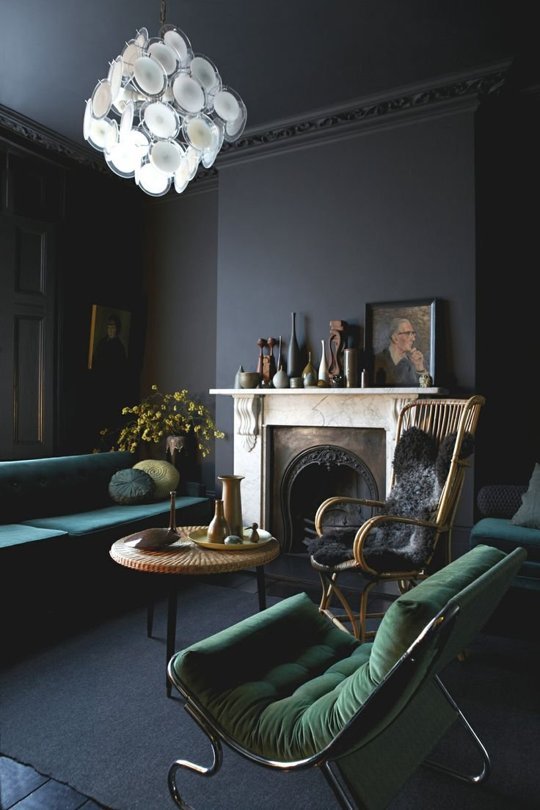|
When approaching a whole-house interior paint scheme, Bynum Residential Design likes to kick our Nashville homes up a notch by tweaking tradition and putting more than a little thought into not only our paint color choices but also the type of paint we use, how we use it, and where we slap it. Here are five ways we use paint to create extraordinary spaces. 1. Paint your walls and trim the same color. Consider painting your trim the exact same color as your walls. I've recently done this very successfully in two of our spec houses, and it does wonders to make a room feel bigger and blur the lines between spaces. In the houses that we deal in, where square footage is from 1,800 to 2,500 square feet, it just reads larger if the trim and the walls are all the same. You still do need to make the distinction between oil-based and water-based paints--painting your trim with oil paint and your walls with water-based paint. That makes the light reflect off of the surfaces differently so your trim pops a little more even though it’s the same color. I think this look is more modern even when the space is very traditional. 2. Or paint your trim darker than your walls. I sometimes will choose to use a dark trim and a light wall color; in fact that's what we did in our renovation at 903 Lawrence Avenue. Whether or not you want to do this will just depend on the vibe that you’re trying to create, but my take on it is that it's a bolder way to play with neutrals. It also nods to colonial times, when it was very common to have darker, boldly colored trim contrasting with lighter walls. And for practical reasons it just makes sense; your dirty baseboards aren't going to bother you nearly as much if they're painted dark gray. More often than not I'm going to go with a trim color that contrasts with the wall color; I talk more about my love of contrast in our 6 Best Dark Paint Colors post. 3. Paint a feature wall with oil-based paint. I follow common thought by always using oil-based paint on trim, but I like to utilize oil paint in other ways, too. For instance, if we do a wall that has a lot of paneling on it then I would paint the trim and the drywall with oil-based paint so it looks like a wood feature wall. Stairwells and chimneys (see below for example) are also great places to take advantage of oil paint's sheen, if these are areas that you want to read more importantly. And of course if you have the luxury of real wood walls, then by all means paint them with oil-based paint. 4. Paint your ceiling the same color as your walls. I love this technique in most any white room, but it also works great in a master bedroom or nursery. By using a dark color, you are better able to control light and mood and sleep. Being surrounded in the same dark hue feels like being wrapped up in a blanket. 5. Paint your trim the same color throughout your house but vary wall or casement colors. This final point may be a bit obvious, but we have seen people use different color trims in their home and it is almost always a blunder. Typically you want your trim and your doors to match throughout the home, whether the doors are wood or painted. This is important for unifying a house from room to room. That doesn’t mean that your cabinets have to be the same color as your trim; there's lots of room to play there. And of course you can have fun with wall color, too. We just did a house—one of the houses with the walls and trim the same color in most rooms—where in certain rooms there would be a different wall color even though the trim color continued. It was a really interesting effect. Want more paint color advice? Here are 5 Great Gray Paint Colors.
2 Comments
Thanks for pointing out that it is important to paint the trims that will match throughout the house to make them feel unfied. I will keep that in mind now that I am looking for professionals to have luxury paints applied around my house. This is in preparation for the Christmas season now that I will start receiving guests by next week.
Reply
channon
5/15/2023 12:48:41 am
What color is on the walls used in photo #2? looking past the stairs into the kitchen. it really makes the wood pop. Thank you!
Reply
Leave a Reply. |
Dee BynumDee Bynum has his finger on the pulse. Whether it’s following trends, scouting emerging neighborhoods and infill opportunities, or overseeing the development of a design, Dee’s dedication to—or obsession with—his projects is renowned. Categories
All
|
|
|
615-415-7877
[email protected] © COPYRIGHT 2022. ALL RIGHTS RESERVED.
|










